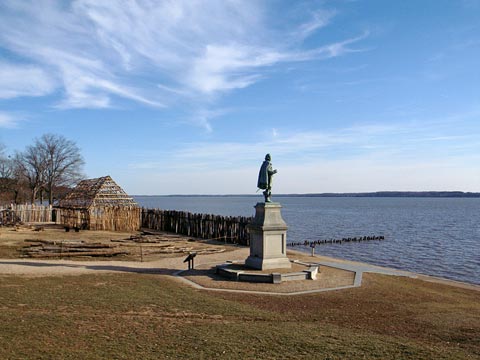
Captain John Smith statue, Jamestown, Virginia
The last few days I was in Williamsburg, Virginia to visit my 85 year old father who remains active despite the usual infirmities that come with a long life. We spent one day touring Colonial Williamsburg, and another at Jamestown, the first permanent English settlement in North America. This year is the 400th anniversary of Jamestown.
The most famous and important of the Jamestown settlers was Captain John Smith, whose colorful life is chronicled on a panel beneath his statue overlooking the James River. Whether Pocahontas actually saved Smith’s life, as he claimed, or not, the known facts of his 51 years as soldier, slave, explorer, and leader are impressive enough. Adjacent to the Smith statue is the recently discovered footprint of the original Jamestown fort, and just beyond, the tower of the 17th century church with its rebuilt sanctuary. Inside is a plaque, placed in 1959 by the Virginia State Bar, that speaks powerfully to the present, and the chipping away of liberties once thought sacred.
The text of the plaque refers to the Magna Carta and Common Law, which served as the basis for the American constitution and Bill of Rights. The principles of Common Law include the right to habeas corpus, due process, and the right to a jury of ones peers.
The last line of the plaque above reads:
Since Magna Carta the Common Law has been the cornerstone of individual liberties, even as against the crown, summarized later in the Bill of Rights its principles have inspired the development of our system of freedom under law, which is at once our dearest possesion and proudest achievement.
